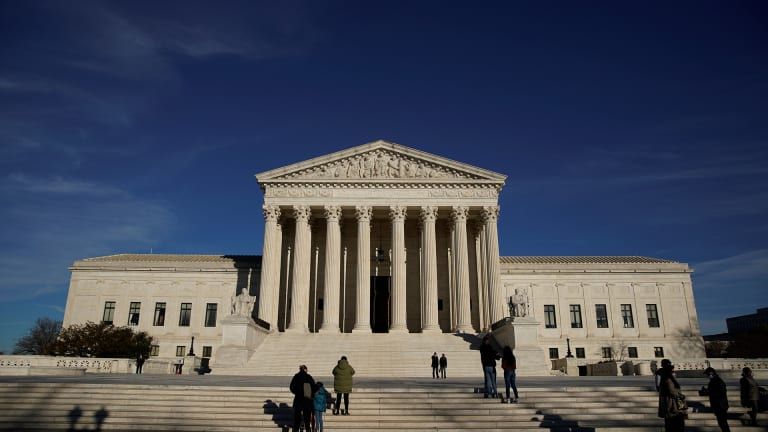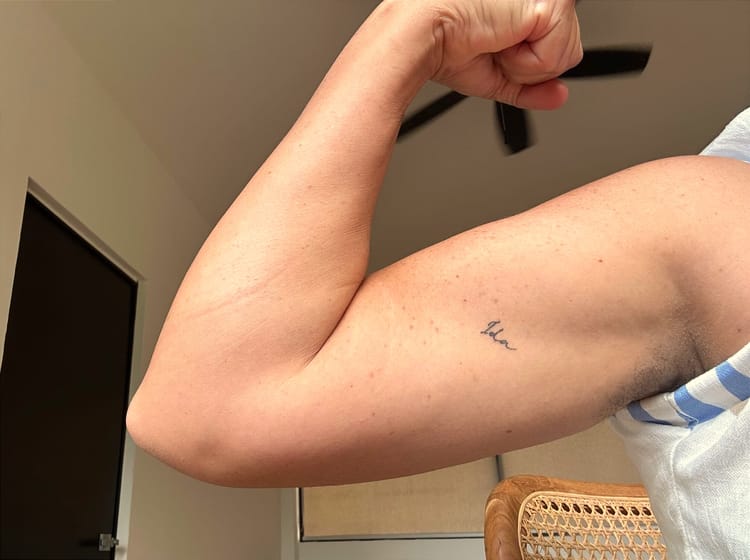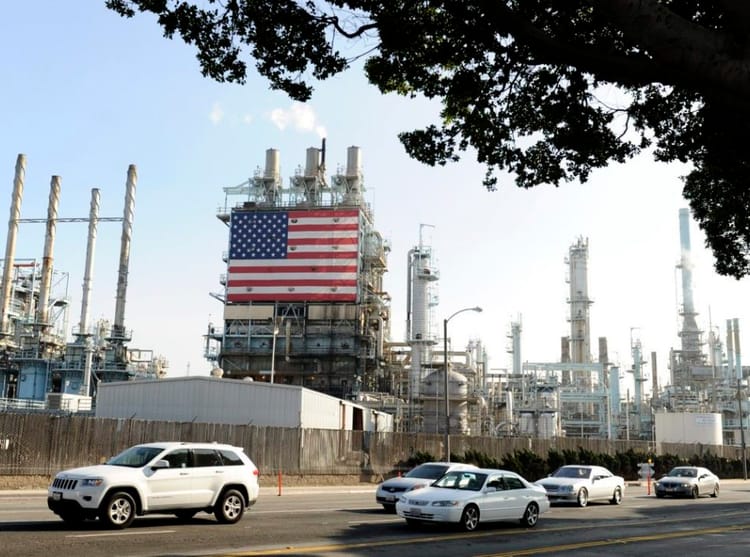Sackett, West Virginia and the Judicial Strategy to Gut the EPA

Another Supreme Court session, another serious blow to bedrock environmental regulations. It's almost like that's the plan or something.
This week, the Supreme Court ruled in Sackett v. EPA that the Clean Water Act does not protect watersheds adjacent to water sources, despite the fact that Congress explicitly said it does back when it clarified the Clean Water Act in 1977 (the Act was originally passed in 1972). To put a finer point on it, the Supreme Court "well actually'd" us all on the definition of the word "adjacent," which apparently doesn't mean what the dictionary says it does, or what Congress said it did back in the 70s, or what the Army Corps of Engineers has been saying for 40 years, but in fact "adjoining," removing with the stroke of a pen protections for more than 100 million acres of wetlands that are critical to maintaining clean drinking water, mitigating floods, storing carbon, and supporting multiple species.
The facts of the case are this: In 2007, Michael and Chantell Sackett began filling in the wetlands on their property near Priest Lake, in Idaho, with the intention of building a house there. Federal regulators showed up to tell them they didn't have the right permits. Because their property is separated from the lakeshore by a road, the Sacketts argued that the Clean Water Act shouldn't apply and they shouldn't be required to get a permit.
"If they had applied, they almost certainly would've gotten a permit, but they don't even feel like they should have to get one," Sam Sankar, senior vice president for EarthJustice said.
Instead, they filed a suit, represented by the libertarian law firm Pacific Legal Foundation and supported by briefs from dark money think tanks and trade groups representing polluting industries from mining to timber, animal ag and fossil fuels.
Although the final ruling was a 5-4 split, with Kavanaugh breaking ranks with the his conservative colleagues, all nine justices agreed that the Sacketts shouldn't have needed a permit in the first place, prompting Jason Rylander, with the Center for Biological Diversity to say "there's not one reliable vote on [the Supreme Court] for real science-based environmental protection." A 2008 EPA inspection report found that the Sackett property, located about a football field away from Priest Lake, was once part of the Kalispell Bay Fen wetland system before it was divided by a road, and the agency found evidence of subsurface flow between the fen and the Sackett property.
But just as they used West Virginia v EPA —a case over a law that was never implemented—to curtail the EPA's ability to regulate greenhouse gas emissions, the court used Sacket—a case over a permit they deemed unnecessary— to, in (of all people's) Kavanaugh's words, "rewrite" the Clean Water Act.
The ruling leaves the public with two recourses for protecting wetlands: pushing Congress to be even more explicit about what the Clean Water Act protects, and relying on states to implement broader protections (which will first require changing state law in some places). Once again the Court has made it clear that it is the arm of a longstanding, corporate-funded campaign to expand corporate freedoms as it curtails civil rights.
"These individuals, they dress in suits and ties, but they represent a pretty extreme ideology,"Lisa Graves, executive director of watchdog organization True North Research, said. Graves formerly ran the Center for Media and Democracy (and remains president of CMD's board) and worked as Deputy Assistant Attorney General in the Office of Legal Policy at the U.S. Department of Justice during the Clinton Administration. She was integral in exposing the right's long-standing judicial strategy, and the role the Federalist Society played in implementing it. Now former Federalist Society head Leonard Leo has moved on to a new project, with billions of dollars in funding from billionaire manufacturing magnate Barre Seid, but he's still focused on the courts as the most effective mechanism to deliver what he calls a "structural revolution."
"He described in a speech to the Council for National Policy in 2020 that America stands at the precipice of what he called the revival of the 'structural Constitution.' And he told the CNP audience that no one alive in that room had seen the type of legal revolution that America was about to see based on the appointments to the Supreme Court and other courts to revive this so-called structural Constitution to reinstate the law, as it existed, pre-New Deal," Graves explained. "And, you know, that affects a whole host of laws. It affects civil rights laws, it will affect labor rights, environmental regulation, and more."
The Supreme Court seems to be very much on that path at the moment. In Sackett, as in West Virginia v EPA, the justices invoked little-used court rules to justify weighing in where previous benches wouldn't have. They seem to have no problem at all with judicial overreach when it suits them. As Sankar pointed out, these changes to the Clean Water Act have been proposed by the same polluting industries that backed this case for more than a decade. They couldn't get it done politically, so they took it to a hand-picked court to do it for them instead.
This is a radical right court that has once again shown a willingness to toss precedent and ingore the intentions of Congress. An independent court is fundamental to democracy; a government committed to protecting democracy, as the Biden Administration has claimed, should be prepared to respond with similarly unprecedented measures: packing the court, impeaching Thomas (not a radical move at all in light of the large and growing evidence of misconduct there), enacting the perfectly reasonable ethical oversights Senator Whitehouse has proposed would all be perfectly reasonable actions given the Court's repeated willingness to brazenly do the bidding of a handful of plutocrats.
Hi! If you enjoy this newsletter and our reporting in general, please consider upgrading to a paid subscription if you haven't already. Paid subscribers get early and ad-free podcast episodes delivered directly to their inbox, as well as early access to new projects we've got cooking. (Please let us know if you have ideas for other paid subscriber benefits—we've been hesitant to get into merchandise because of the obvious environmental impacts, but are happy to share more bonus content!) . They also support our reporting, and subsidize the newsletter to keep it free for more than 13,000 subscribers. Thanks for your support!
This Week's Climate Must-Reads
- [Study] New research from Stanford University, published in Environmental Education Research, finds that widely used history textbooks in California and Texas, which strongly influence textbook content nationwide, tend to emphasize controversy in discussions of climate science and prompt students to think about our planet's rapid warming as a matter of opinion or a two-sided issue.
- Big polluters’ share prices fall after climate lawsuits, study finds - New research finds that fossil fuel companies register a drop in value after litigation or unfavorable judgments. By Isabella Kaminski for The Guardian.
- What We Owe Our Trees - Forests fed us, housed us, and made our way of life possible. But they can’t save us if we can’t save them, Jill Lepore writes for The New Yorker.
- James Hansen Warns of a Short-Term Climate Shock Bringing 2 Degrees of Warming by 2050 - Bob Berwyn for Inside Climate News
- Climate protesters indicted (Ellie Silverman for The Washington Post) The protestors covered the case of Degas' ‘Little Dancer Aged Fourteen’ sculpture in the National Gallery of Art with black and red paint in April.





